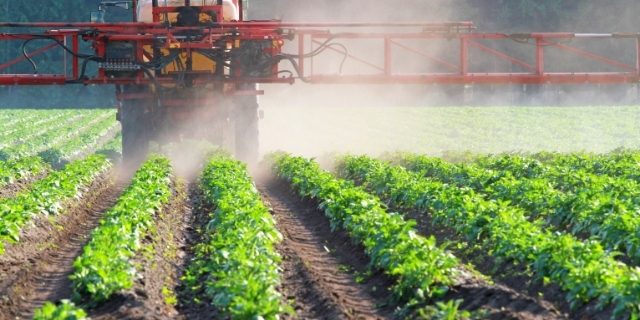19
Oct
Common Insecticide Malathion Linked to Chronic Kidney Disease

(Beyond Pesticides, October 19, 2021) Exposure to the insecticide malathion increases risk of developing chronic kidney disease (CKD), according to a study recently published in the International Journal of Environmental Research and Public Health. According to study co-author Nicholas Osborne, PhD, CKD is on the rise in developing countries in Southeast Asia and Central America, and, “[n]early one in 10 people in high income countries show signs of CKD, which is permanent kidney damage and loss of renal function.” Although CKD risk increases with age, and is associated with other health factors like smoking, heart disease, and diabetes, cases without clear cause are increasingly common, indicating the that environmental factors are likely playing a role.
Researchers began with data drawn from the United States’ National Health and Nutrition Examination Survey (NHANES), an ongoing study that assesses Americans’ health and nutritional status through interviews, physicals, and other health tests. Urine samples taken from individuals enrolled in NHANES 2001-2004 and 2007-2010 (tests within years between these dates did not analyze specific pesticides) were reviewed for the presence of pesticides, and compared against data collected on kidney function. In addition to malathion, 2,4-D, chlorpyrifos, and 3-PBA, the major metabolite for most synthetic pyrethroid insecticides, were analyzed for their link to CKD. Scientists adjusted their statistical analysis to incorporate a range of confounders, and conducted a more sensitive analysis that excluded individuals with hypertension and a history of diabetes.
The data reveal malathion to be significantly associated with increased risk of low kidney functioning and CKD. Risk was not significantly increased by exposure to the other pesticides studied. However, malathion retained a significant association even under the sensitivity analysis adjusting for known CKD factors. “The findings suggest we should limit our exposure to pesticides, even in very small doses, as chronic exposure may lead to negative health outcomes,” Dr. Osborne said.
While organophosphate class insecticides like malathion are often cited for their high acute toxicity, it is long-term, chronic exposure to these pesticides that put the general public at greatest risk. Individuals can be exposed to these small amounts by eating conventional, chemical-dependent foods, through mosquito spray programs, drift from nearby landscape applications, and other public recreational areas.
Malathion was first registered in the U.S. in 1956, yet new information on how it harms health is still being uncovered. In addition to damage to kidney function, are concerns over its carcinogenicity. A recent report in The Intercept outlines how rank and file staff at the U.S. Environmental Protection Agency were railroaded by pesticide industry interests into reapproving malathion despite grave concerns over the chemical’s safety.
“When malathion was up for reregistration, when the heads of the various divisions who were looking at health effects were sitting around the table and planning to address the issue, the science adviser poked his head in the door and said, ‘This is a big-ticket pesticide, and we don’t want to have any problems,’” recounted Bill Hirzy, PhD a former EPA official to The Intercept. Despite strong links between malathion and a range of different cancers, EPA deigned the chemical as having “suggestive evidence of carcinogenicity,” not the stronger “likely carcinogen” designation initially proposed by EPA staff.
Advocates working towards improved public health protections note that the pesticide industry often treats the health effects presented by its products as simply obstacles in the way of future profit. In addition to malathion, glyphosate is the other pesticide that has been strongly associated with the increase in CKD throughout the world. In 2019, two scientists were presented the American Association for the Advancement of Science’s (AAAS) Scientific Freedom and Responsibility Award for their research linking glyphosate to CKD in Sri Lanka. Their work resulted in coordinated attacks on the scientists’ integrity, as well as death threats. The industry’s response to AAAS was swift, placing intense pressure on the group, resulting in a suspension of the decision. After a months long process, science prevailed over industry politics, and the researchers officially received their award. However, these examples show the lengths to which the industry will go work around or discredit those who uncover the dangers of their products.
“Initially, it was suspected the condition [CKD] was associated with agricultural workplaces through exposure to heat stress, dehydration, pesticide spraying, heavy metals and agrochemicals,” Dr. Osborne, coauthor of the current study, said. “However, environmental contamination, pesticide residues and herbal medicines potentially containing heavy metals may also be contributing to CKD.” Dr. Osborne indicates that his team will be looking specifically into the rise of CKD in Sri Lanka. “We will continue to investigate if other pesticides may be involved and are planning to collect data on Sri Lankan farmer behaviours to examine their level of exposure when using pesticides in the field.”
With EPA lacking public trust, there are few available resources that pull together the independent literature and provide a cutting-edge look at the health and environmental hazards of commonly used pesticides. To that end, Beyond Pesticides recently updated and released fact sheets on the Health Effects, and Environmental Effects, of 40 commonly used Lawn Pesticides. As Beyond Pesticides notes, malathion a probable carcinogen by the World Health Organization, and is linked to kidney, liver damage and a range of other health problems that are all too common in today’s world. In addition to the fact sheets on common lawn care pesticides, dig into the Pesticide Gateway for more in-depth analysis on specific pesticides, and the Pesticide Induced Diseases Database for references to cutting-edge scientific studies on pesticide dangers.
All unattributed positions and opinions in this piece are those of Beyond Pesticides.
Source: The University of Queensland press release, International Journal of Environmental Research and Public Health










